39 position time graph to velocity time graph worksheet
Having trouble with this last problem, and I just can't figure it out. Well, it's 2 sub-problems. (f) What is the final position *x* of the object at *t* = 18 s? (g) Through what total distance has the object moved between *t* = 0 and *t* = 18 s? [https://s.yimg.com/tr/i/797e44a7c1474084bfec7b6982ae281d\_A.png](https://s.yimg.com/tr/i/797e44a7c1474084bfec7b6982ae281d_A.png) (this is the graph for the problem) So I tried 0 for f, but that didn't work. How do I go about solving these? The acceleration of the object is 0.28 m/s. I know how to graph this on a velocity vs time chart, but I can't figure out the equation for a position vs time graph. So far I have come up with the idea that y=x\^1.28. What would the equation be?
A rock climber stands on top of a 50m high cliff overhanging a pool of water. He throws two stones vertically downward 1.0s apart and observes that they cause a single splash. The initial speed of the first stone was 2.0m/s. How long after the first stone does the second stone hit the water? My problem Iam having is that I get the correct answer as per book, but I want to check my answer to see if it is correct. I draw a velocity-vs-time graph and calculate the area with the formula of the fin...
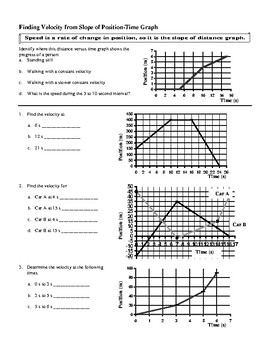
Position time graph to velocity time graph worksheet
WORKSHEET: Position-time & Velocity-time graphs. DUE DATE: Motion diagrams. A motion diagram uses dots to represent the location of an object at equal time ...2 pages During which time is the car moving faster, 0-3s or. 8-10s? How could you know this without calculating the velocity? Problem 2: A car travels 8 meters in 2 ...4 pages I figured out how to get the velocity in respect to x but want to essentially shift the x axis so that it represents time. Say your main function is x^3+6. I also found the equation for finding time is the length of a curve integral divided by the x acceleration that I found. V=(Sqrt (2g(f(0)-f(x)). I'm bad at calc so pls help me integrate the two equations into each other.
Position time graph to velocity time graph worksheet. I'm just teaching myself from a high school textbook. I know on a linear graph instantaneous velocity equals average velocity. But I'm having trouble since the graph is curved. I'm working with the following table: position (m[forward]) = 0.0 when time(s) = 0.0, position = 2.0 when time = 1.0, position = 8.0 when time = 2.0, position = 18.0 when time = 3.0, position = 32.0 when time = 4.0, position = 50.0 when time = 5.0 Sorry if this table is confusing. I couldn't figure out a better way to r... [link](https://i.imgur.com/Jk32HEm.png?1) What does this question even mean? I'm trying to wonder the motion of each line and I would appreciate any help in clarifying. So if I had 4 lines and 4 graphs how would each line look? Line 1: Uniform velocity on a distance time graph Line 2: Constant velocity on a distance time graph Line 3: Uniform acceleration on a velocity time graph Line 4: Constant acceleration on a velocity time graph I know how a few of the lines look but I sometimes get confused in remembering the difference. [https://imgur.com/a/whsLAO5](https://imgur.com/a/whsLAO5) For question 11 b, just from looking at the graph I thought it'd be 8 seconds, the textbook says its 10 seconds - what am i doing wrong here? not sure if its any help but i calculated the area under graphs when t=8, After 8 s, the bus has travelled 56 m and the bike 64 m.
Identify section(s) where the fly moves with constant velocity. ... Draw an acceleration vs. time graph for the fly. ... from a position of 2.0m north.7 pages time graph for an object whose motion produced the position vs time graph shown below at left. b) Determine the average velocity and average speed for the ...5 pages I understand that one can estimate the displacement on this type of graph but I was wondering if there is any possible way to find the exact displacement. Thanks for all the help Side note: I’m new to reddit and I can’t figure out how to add a picture to my post so please bear with me My question asks to find the velocity of an object swinging back and forth at 0.6 seconds on the graph. The graph shows it’s displacement to the right of its initial staring point (0cm) is 8cm at 0.3 seconds before it pauses for 0.1 seconds and swings the other way to -4cm from 0.4-0.8 seconds where it doesn’t pause and swings the other way to 0 where the graph ends.
We know that velocity is equal to displacement over change in time. We have a graph (velocity vs time) showing an object traveling at a velocity of 20m/s for 2 seconds. So how do we find displacement or distance traveled? We can find the area under the line. This should be justified by the velocity formula so we can do 20m/s = (x/2s) and we get 40m as our answer. Now here’s the problem. At zero seconds, the velocity is zero. At one second, the velocity is 10. At two seconds, the velocity i... I'm going to be doing a math project. It seems that the f1 subscription gives you it, but I wanted to make sure. Thanks As the title states I had a problem on my [physics homework](http://imgur.com/gallery/iWsFkxI) that we were never actually taught how to solve. I eventually threw in the towel and took the hit on points just so I could see the answer and now I'm not sure I know how they got it. I'm assuming there are integrals involved and I tried those numerous times but I have to assume I'm doing something wrong here because I never got 100 m/s The problem asks for the velocity at t = 6.5 s when the partic... I figured out how to get the velocity in respect to x but want to essentially shift the x axis so that it represents time. Say your main function is x^3+6. I also found the equation for finding time is the length of a curve integral divided by the x acceleration that I found. V=(Sqrt (2g(f(0)-f(x)). I'm bad at calc so pls help me integrate the two equations into each other.
During which time is the car moving faster, 0-3s or. 8-10s? How could you know this without calculating the velocity? Problem 2: A car travels 8 meters in 2 ...4 pages
WORKSHEET: Position-time & Velocity-time graphs. DUE DATE: Motion diagrams. A motion diagram uses dots to represent the location of an object at equal time ...2 pages

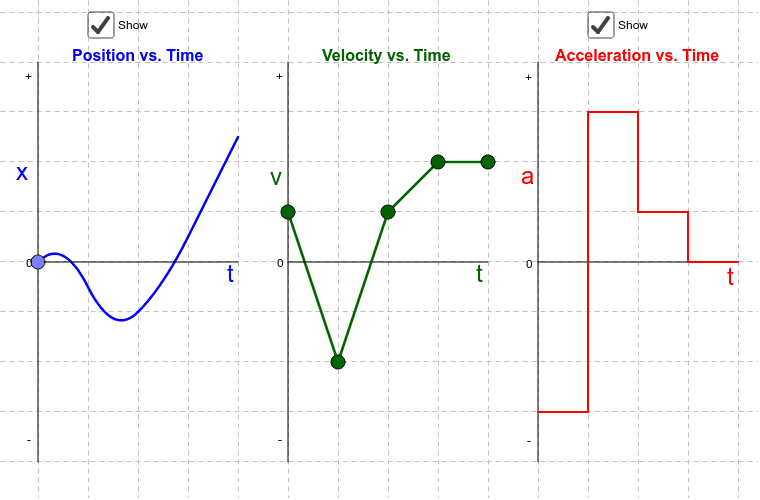




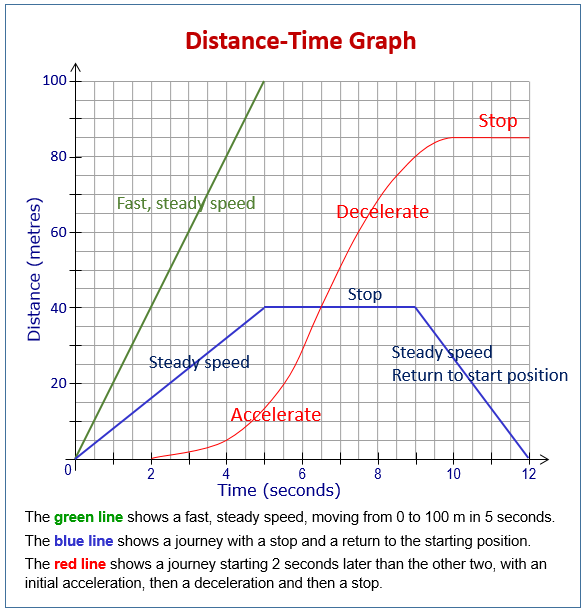
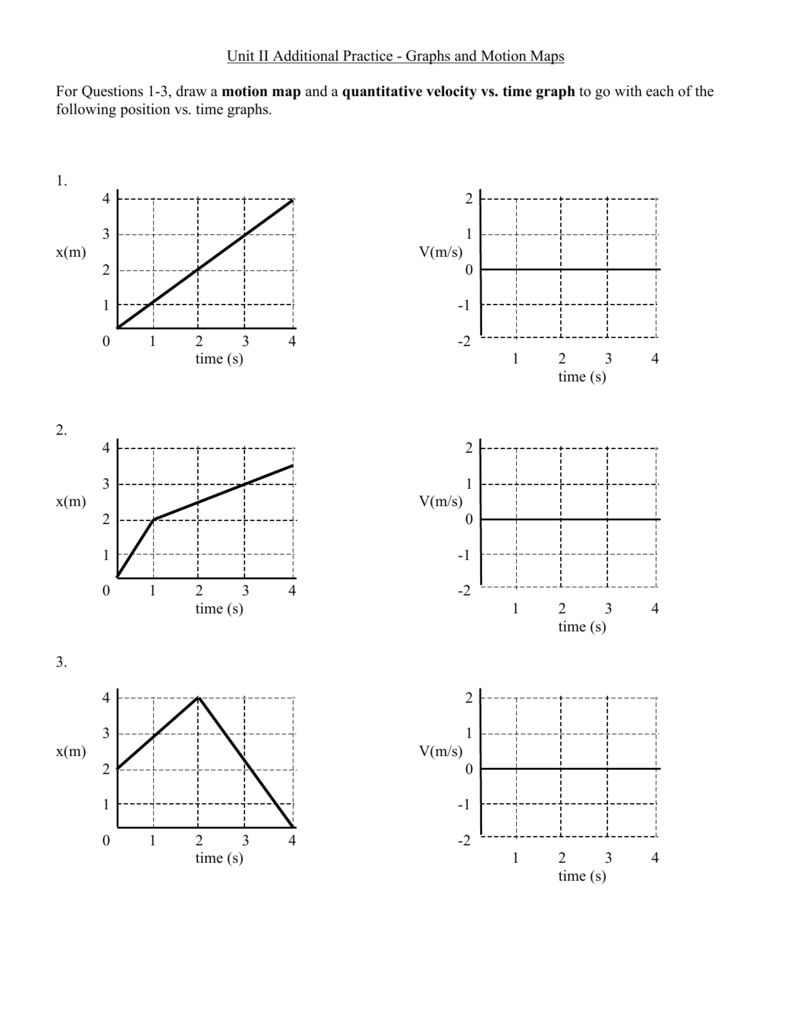
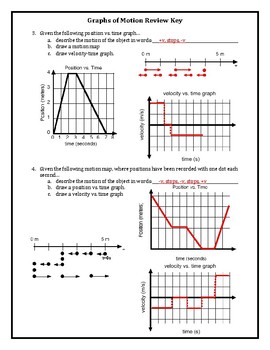
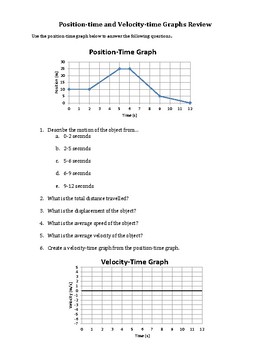



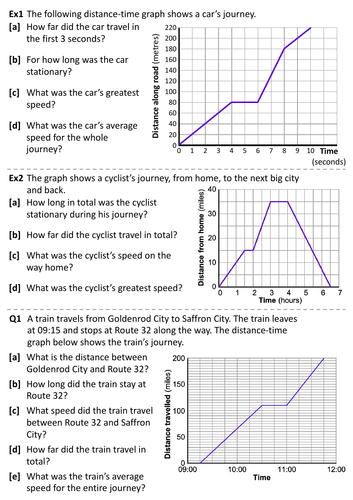


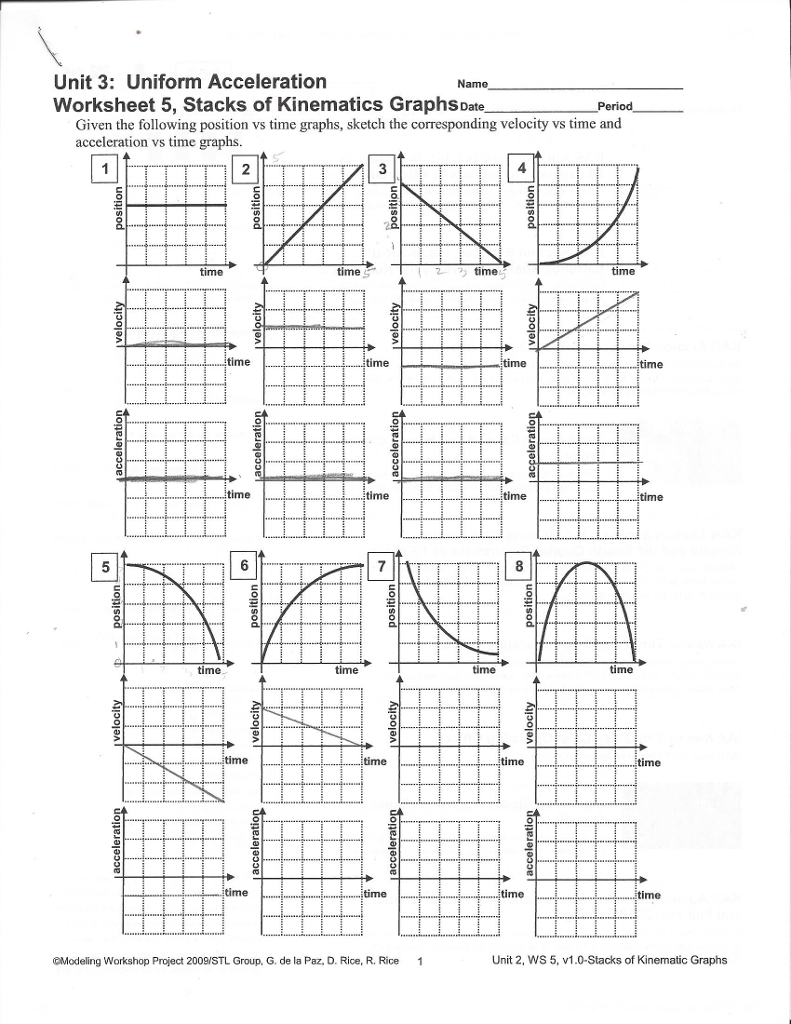


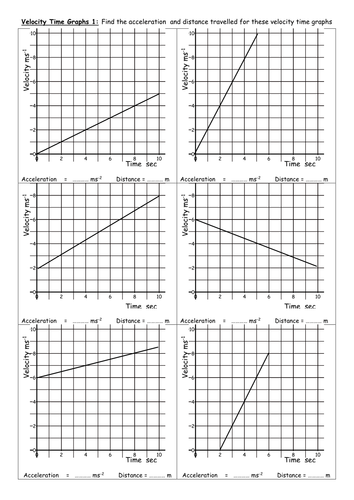


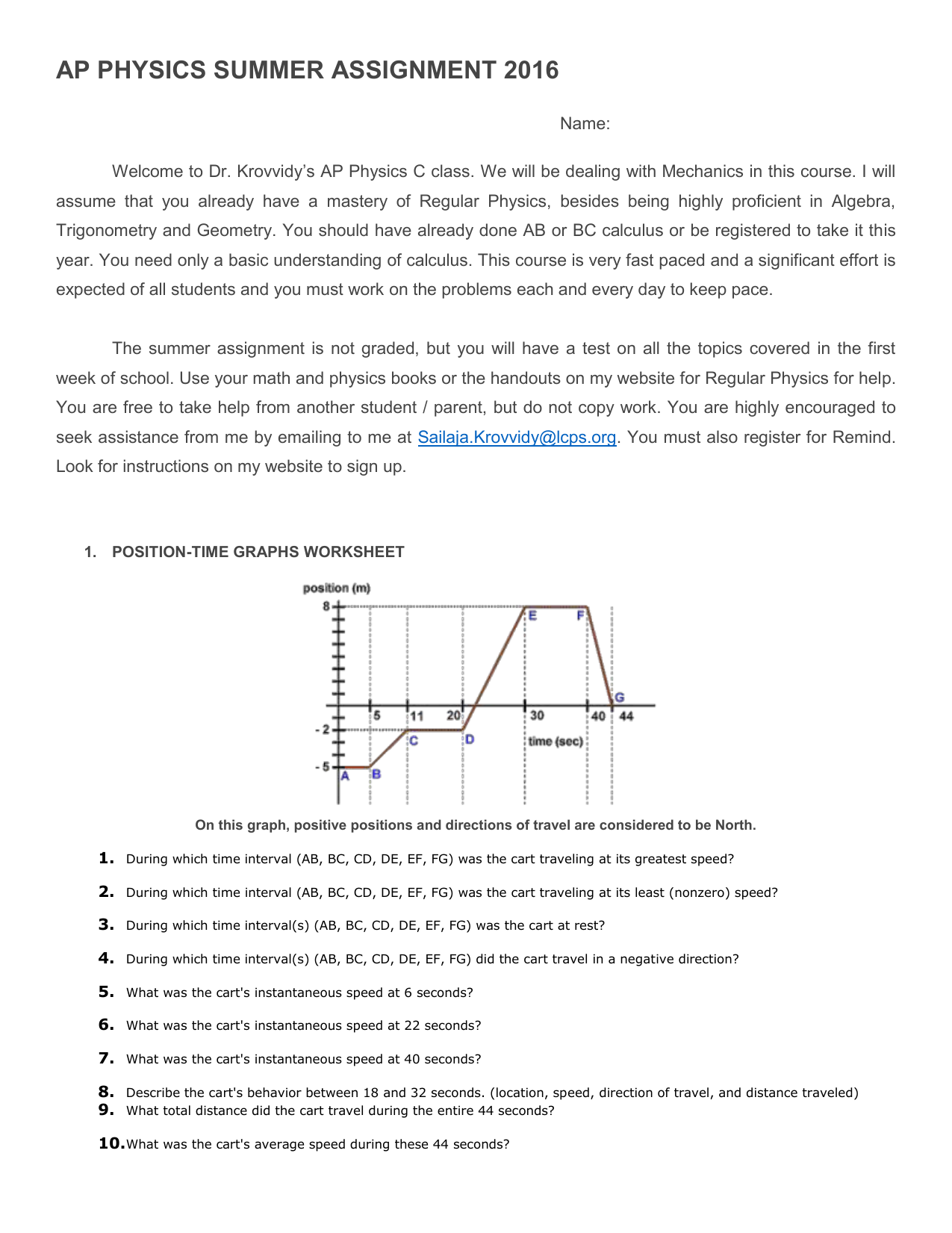


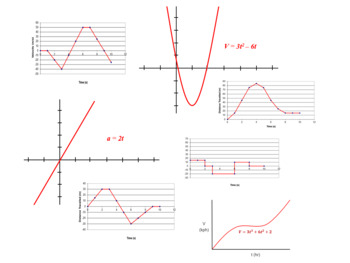


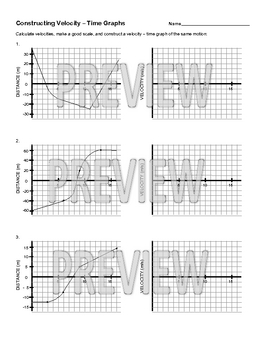
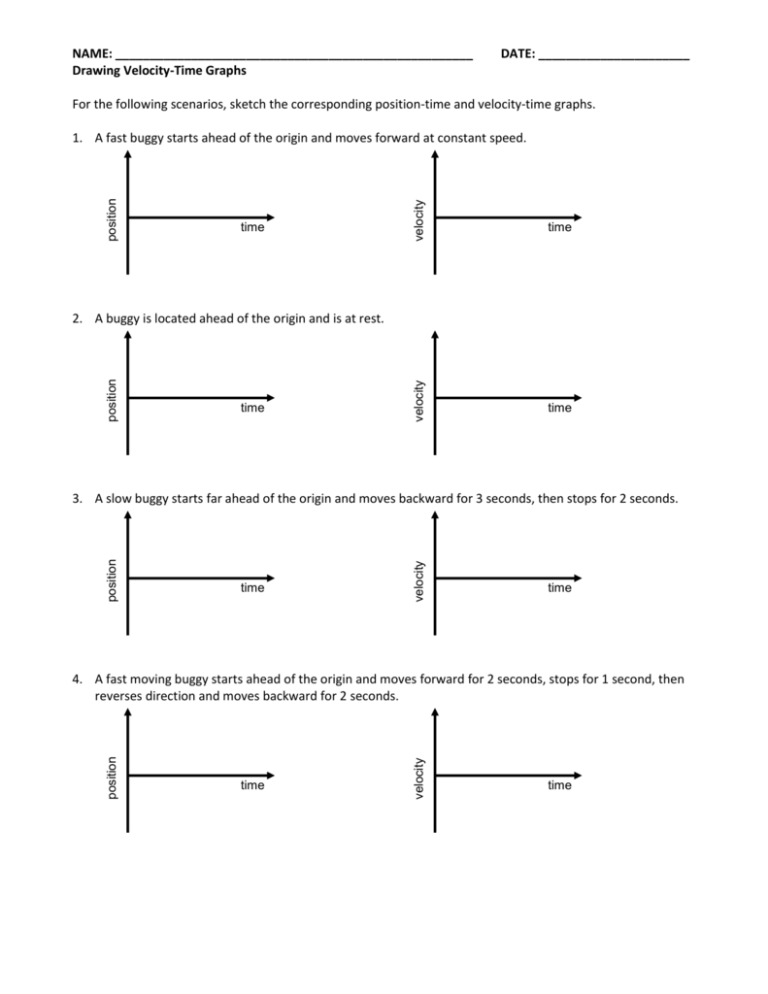

0 Response to "39 position time graph to velocity time graph worksheet"
Post a Comment